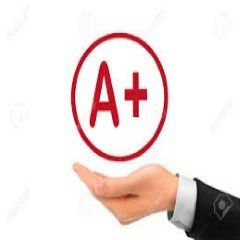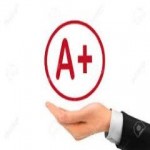Econ 304 Homework #4 Desired Capital Investment and Goods Market Equilibrium correct answers
Economics 304 Homework #4 - Desired Capital, Investment, and Goods Market Equilibrium complete solution correct answer key
Economics 304
Homework #4 - Desired Capital, Investment, and Goods Market Equilibrium
Due Wednesday, 2/15 at the beginning of class- you must hand in homework in the section
you are registered in -no late papers accepted!
Instructions: Please show all work or points will be taken off. Good luck!
1. PART 1 (35 pQints total- 5 points for each part and 10 points for the diagram) You own a golf course in
Florida and you need to determine how many golf carts you need to buy to maximize profits. Please
answer the following questions given the information below.
A brand new golf cart costs 600 rounds of golf and the rate of depreciation is 16% ( .16).
The real interest rate is 4% (use .04 in calculations).
The expected marginal product of capital is given by MPKr = 500 - 5K.
a) What is the user cost of capital and what is it expressed in??
b) How many golf carts should you buy to maximize profits (i.e., what is K *)?
Draw a graph (the uc I MPK graph) depicting the state of affairs and label this initial profit maximizing point as point A. A completely labeled and correct graph is worth 10 points.
c) Now suppose the (local) government with all their financial shortfalls embarks on a campaign to raise revenue to fund the fire department by imposing a so-called "luxury tax" (we know it as j) equal t~ of gross revenue What happens to the profit maximizing number of golf carts? Please show all work and label as point B on your uc/MPK graph
d) Now explain why your profit maximizing K* has changed. Please be specific using the firm's profit
maximizing condition (explain the intuition!). Start your answer with "If I did not change my capital
input (my K*), then I would not be ....... (you can finish the rest!) .................
e) The Federal government, knowing all about the fmancial pains encountered by state and local
governments given the Great Recession, decides to offer an investment tax credit egual to 30% {this is in addition to the tax already imposed by the local government). What is your desired capital stock (K •) now? (Hint: An investment tax credit effectively reduces the price of capital to the ftrm - think of it as this -under the investment tax credit- you buy a golf cart (cost= 600 rounds of golf) and you get a 30% rebate from Uncle Sam so the investment tax credit adjusted price of the golf cart is now 420 rounds of golf [(1-.30) x 600 = 420]. Please show all work again and label this as point Con your uc/MPK diagram.
1. PART 2 (NEW GRADER- 35 points- 5 for f) and g) 10 for h) and 15 for graph)) Draw a desired
investment diagram (completely labeled with all the shift variables noted next to the function in parentheses with signs ( + or -)) depicting the initial equilibrium as point A (simply draw a negatively sloped 1° curve going through point A). Label the initial real interest rate as r• A = .04 (as is given above) and the initial level of desired investment as IdA· Note importantly that we do not have numbers for desired investment, but that's ok, we are focusing on the change in desired investment, given the same real rate= .04. Be sure to include all of the shift variables in parentheses next to this initial 1° function.
A completely labeled and correct graph is worth 15 points.
Then show, as point B, the new level of desired investment, at the same real rate = .04.
f) Why did the level of desired investment change, even though the real rate of interest did not? Please be specific using the equation that connects the desired capital stock (K•) to desired investment (as we did in class (equation 4.6 .. .in text).
Label this (new) level of desired investment as Ida (again, we don't have specific numbers for Ida. Be sure to include all of the shift variables in parentheses next to your new I0 function
Finally, show how the investment tax credit maps to your desired investment diagram and label this final point as point C. Label this (new) level of desired investment as Ide (again, we don't have specific numbers for Id c). Make sure you include all of shift variables in parentheses next to your new 1° function.
g) Suppose that the Federal Reserve had a goal to get the capital stock (the number of golf carts purchased) back to its initial level as in part b (this would keep the economy from overheating). Given all the changes (the imposition of the tax by the local government and the investment tax credit offered by the Federal Government), what would they have to do to the real rate of interest to achieve their objective? Please show all work and I am looking for a specific number (i.e., r = ?).
h) (10 points) Finally, explain how this most previous development (a change in r) would influence your two diagrams and why. Don't show on your TWO diagrams, I am asking for a discussion (this question is worth ten points!)
2. (50 points total - 5 points each part except part f = 10 points + diagram = 10 points) A closed
economy has full employment level of output (Y) of 2000 (we got this from chapter 3 - the interaction of labor supply and demand .... aka, the scarecrow!). Government purchases, G, are 200, taxes (T) are also 200 (G and T are our exogenous variables). Desired consumption (Cd) and investment (Id) are: C = 400 + 0.5(Y -T)- 600r
r = 600- 400r
a) Solve for the desired savings function in intercept- slope form (note, the intercept is an integer).
b) Name all the shift variables that are implicitly in the intercept of your savings function along with
whether they share a positive or negative relationship with desired savings .
c) Now solve for the goods market clearing interest rate. Please show all work. L r) 1 ., 1 c, v.,.. ":.
Draw a desired savings/investment diagram locating this initial equilibrium and point A.
d) We know that GDP (Y) is comprised ofC +I+ G given our closed economy assumption. Calculate the level ofC, I, and G respectively along with the percent of each, relative to GDP
e) We now consider expansionary fiscal policy as in an increase in G. In particular, G rises from 200 to ~ We are assuming the government spending multiplier is zero so that GOP is unaffected and remains at ~· Click Here for Barro (a very noteworthy economist) arguing that government spending multipliers are likely to be zero! (Classical for sure!) Resolve for the new market clearing interest rate and the associated levels of savings and investment.
Add this development to your diagram and label as point B.
f) ( 10 points total - 5 for discussion, 5 for graph) What has happened to the level of desired investment and why? Support your argument by drawing a user cost - MPK' diagram showing the movement from A to B. What is this phenomenon referred to? Click Here for a huge hint!
g) What has happened to the level of desired consumption and why? Be specific and be sure to refer to the substitution effect in your answer!
Econ 304 Homework #4 - Desired Capital Investment and Goods Market Equilibrium correct answers
now consider expansionary fiscal policy as in an increase in G. In particular, G rises from 200 to ~ We are assuming the government spending multiplier...





Askwilliam
Senior JournalistSell Your Solution Report Solution Support Center
Online Users
-
 Askwilliam
Today
Askwilliam
Today

A+ - Thank you!
Thanks for the positive feedback!